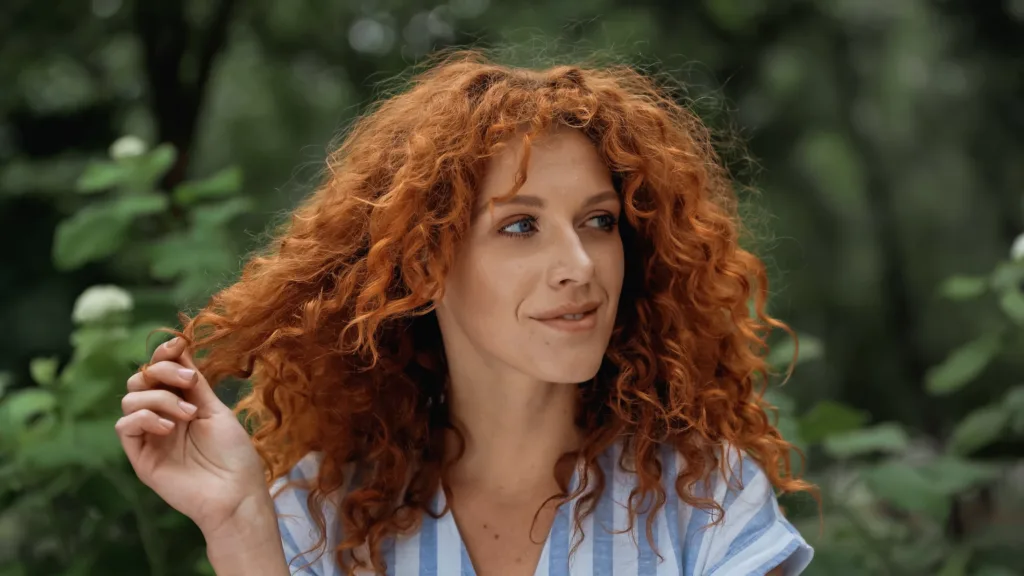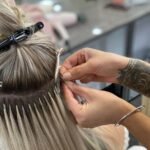Curls of Hair. Curls have a charm that’s impossible to ignore. Whether they’re loose waves, bouncy ringlets, or tight coils, curls of hair are as diverse as they are beautiful. Yet, anyone with curly hair knows that managing those spirals requires a little more love and a whole lot of knowledge. From finding the right products to understanding your unique curl type, embracing your natural curls is both a journey and a celebration of individuality. This guide is here to help you love your curls more than ever, with tips, tricks, and a complete roadmap to luscious, defined curls that turn heads everywhere you go.
Introduction to Curly Hair
Why Curls Are Unique and Beautiful
Curly hair isn’t just a texture—it’s a lifestyle. Curls of Hair bring volume, character, and personality to your look. They bounce with every step and frame your face with a flair that’s effortlessly bold and soft at the same time. No two curls are alike, which makes them incredibly unique.
The beauty of curls lies in their natural unpredictability. One day they’re forming perfect spirals, the next they’re wild and free—and that’s the magic. Curls symbolize freedom and self-expression, and they often represent culture, heritage, and identity in deeply personal ways.
They’re more prone to dryness, frizz, and breakage, especially if not cared for properly. That’s because the natural oils from your scalp have a harder time traveling down curly strands than they do on straight hair.
But here’s the good news: with the right knowledge and care, curls can thrive. Learning to work with your curls instead of fighting them is the key to unlocking their full potential.
Types of Curl Patterns (2A to 4C)
Curly hair is not one-size-fits-all. There’s a whole spectrum of curl patterns, and understanding where yours falls can help you tailor your hair care routine. The curl type system is generally divided into four main categories:
-
Type 2 (Wavy): Ranges from loose S-shaped waves (2A) to more defined waves (2C).
-
Type 4 (Coily or Kinky): From soft Z-pattern curls (4A) to densely packed, tight coils (4C).
For example, 2A hair might get greasy faster and need lighter products, while 4C hair often craves intense moisture and protective styling.
It also helps you set realistic expectations—what works for one curl type might not work for another. But no matter your type, every curl is beautiful, and every curl deserves proper care.
Understanding Your Curl Type
How to Identify Your Curl Pattern
Determining your curl pattern is the first step to mastering your hair care routine. The easiest way to do this is by examining your hair when it’s clean, wet, and product-free. Look at the shape of your strands:
-
Do they form loose, beachy waves? You’re probably a Type 2.
-
Are your curls more defined and form ringlets? You likely fall under Type 3.
-
Are your strands tightly coiled or zigzagged? That’s Type 4 territory.
Your hair can also be a combination of multiple types. For instance, you might have 3B curls at the crown and 3C towards the back.
Porosity and Texture: Key Factors in Curl Care
Knowing your curl pattern is important, but it’s just one part of the puzzle. Hair porosity—your hair’s ability to absorb and retain moisture—is equally crucial. There are three types:
-
Low Porosity: Water and products sit on the hair’s surface.
-
Medium Porosity: Well-balanced, retains moisture easily.
-
High Porosity: Absorbs quickly but loses moisture fast.
Texture matters too. Is your hair fine, medium, or coarse? Fine curls may need lighter products to avoid being weighed down, while coarse hair may require thicker creams and oils to stay hydrated.
Understanding porosity and texture allows you to fine-tune your routine, choose the right products, and achieve better results with less trial and error.
The Role of Genetics in Curl Formation
Your curls are a gift from your ancestors—literally. Genetics determine not only your curl pattern but also your hair’s thickness, growth rate, and even porosity. Ever noticed how some people’s hair texture changes after pregnancy or significant weight loss? That’s your body reacting to internal shifts.
While you can’t change your genes, you can work with them to get the best out of your curls. Embrace your natural texture, and know that healthy hair—no matter the pattern—is always in style.


